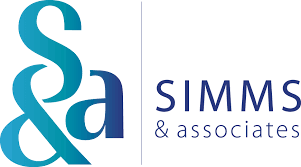What if the key to thriving in today’s complex business world wasn’t just about efficiency or engagement, but the magic that happens when you get both right?
That’s where Workforce Management (WFM) and Human Capital Management (HCM) come in—and why the role of the Chief Happiness Officer (CHO) is no longer just a nice-to-have, but a game-changer.
WFM and HCM Are Merging—And It Matters
Once upon a time, WFM and HCM operated like neighbors who only waved at each other over the fence. WFM handled the nuts and bolts—forecasting, scheduling, and time tracking. HCM focused on the bigger picture—hiring, developing, and retaining talent.
But here’s the catch: efficiency without engagement is a ticking time bomb. And engagement without structure? That’s a recipe for chaos. Smart businesses are realizing that to truly thrive, WFM and HCM need to work hand in hand. It’s not just about keeping operations running smoothly—it’s about designing a people strategy where employee happiness and productivity are two sides of the same coin.
Enter the Chief Happiness Officer
Say hello to the Chief Happiness Officer—a role that’s quickly proving to be more than just a trendy title. The CHO is the bridge between operational efficiency and genuine employee satisfaction. They ensure that well-being isn’t just a perk or an afterthought but is built into the way a business operates.
It’s about more than free fruit bowls and mindfulness apps. A great CHO examines everything from shift structures to career development opportunities to workplace culture. They make sure these aren’t just “nice-to-haves” but essential, measurable components of business strategy.
Measuring Happiness: Yes, It’s Possible
Here’s the exciting part—we’re not talking about guesswork. Modern WFM platforms are getting smarter, identifying patterns that could lead to burnout before they cause real damage. Meanwhile, HCM systems are tracking career progress, learning engagement, and real-time employee sentiment.
For the CHO, these insights are gold. They can adjust schedules to prevent burnout, create career growth pathways that keep employees motivated, and fine-tune reward systems so that recognition feels authentic, not forced. The smartest businesses are putting well-being metrics right next to financial results on their executive dashboards.
Why It Matters More Than Ever
In a world where top talent values flexibility, purpose, and mental health, ignoring employee happiness is like leaving the front door wide open and wondering why people keep leaving.
Research proves it time and again: Companies with high employee engagement see better retention, higher productivity, and greater innovation. In the U.S., these businesses are 21% more profitable and 17% more productive than their peers, according to Gallup’s latest data.
The CHO is becoming the architect of this success, working alongside HR, operations, and senior leaders to create a workplace where happiness fuels performance. This isn’t just a feel-good initiative—it’s a strategic priority that strengthens resilience and drives competitive advantage.
Designing Happiness Is Designing Success
As AI, predictive analytics, and hyper-personalization continue to shape the workplace, the integration of WFM and HCM will only deepen. And the businesses that truly thrive? They’ll be the ones that understand happiness isn’t a wellness initiative—it’s a critical business asset.
Here’s the bottom line: If you’re not actively designing for happiness, you’re designing for attrition. And in a world where talent is more valuable than ever, that’s a risk no business can afford to take.
